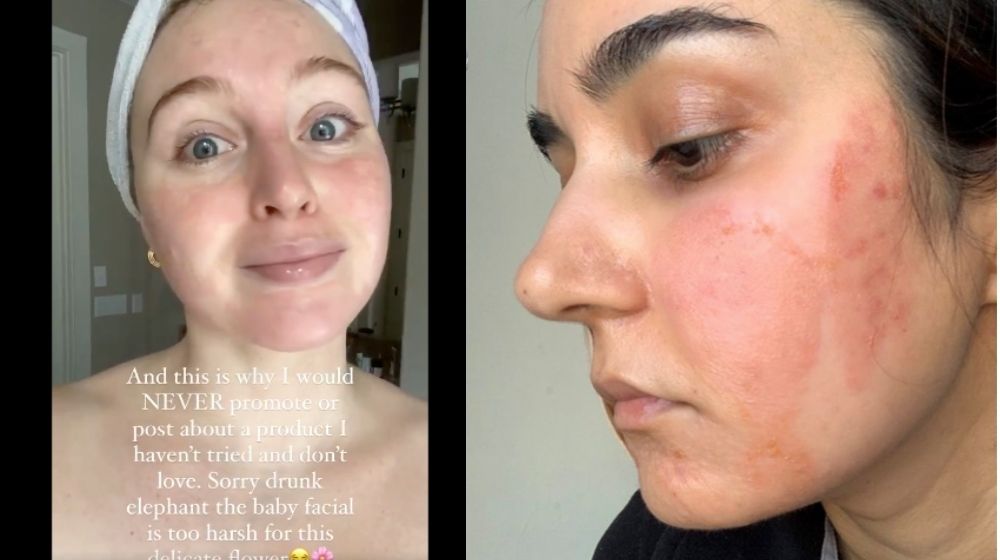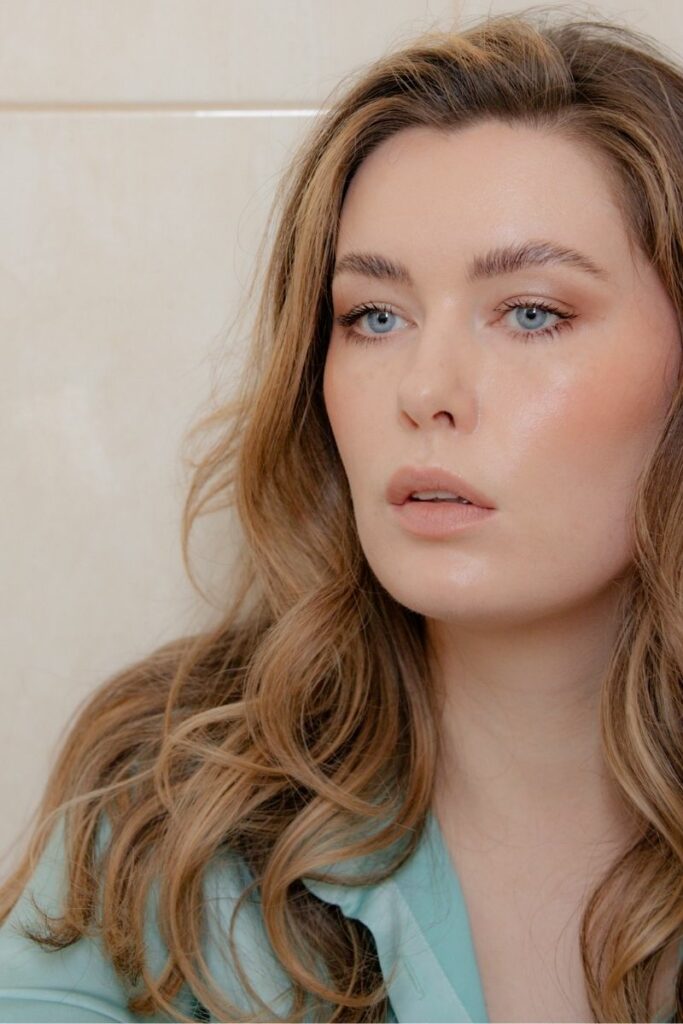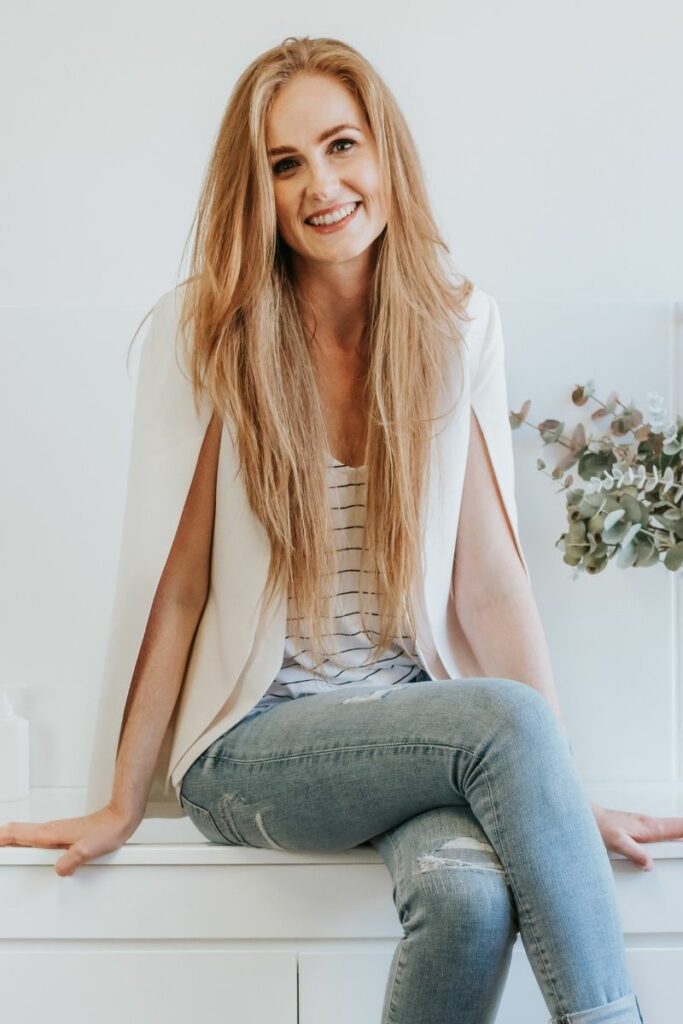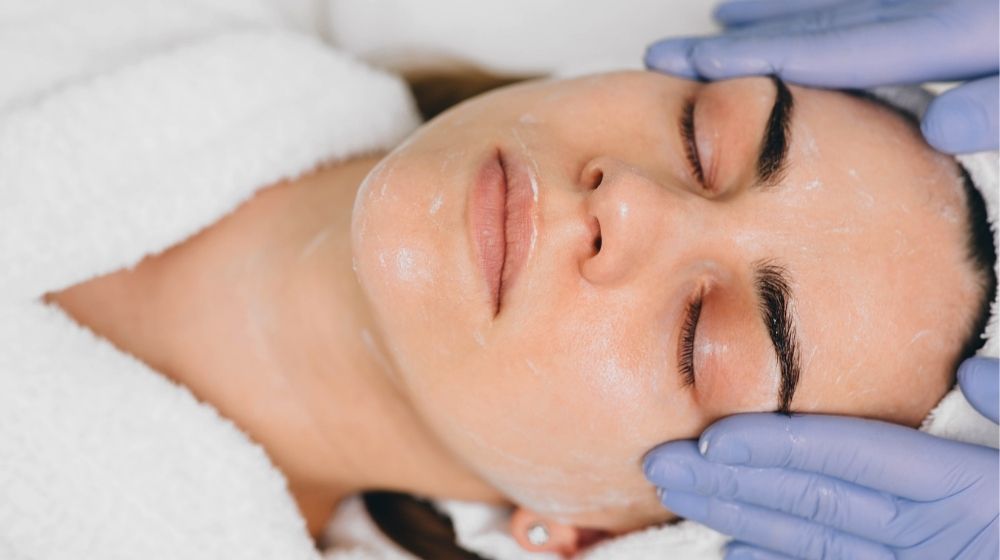Exfoliation has been popular for thousands of years. The ancient Egyptians bathed in sour milk to benefit from lactic acid while women during the Middle Ages soaked cloths in lime, mustard and sulphur to freshen their complexions. Fortunately, todays’ exfoliants are far easier and safer to use, and they’ve experienced an explosion in popularity over the last five years, flooding supermarket, retail and salon shelves. But lately, this time-honoured treatment has been receiving a backlash online.
Exfoliation backlash: What’s the deal?
Beauty Journalist Jessica Defino has close to 40k followers on Instagram. Most of them are equally influential journalists, brands and influencers. Defino has made a name for herself preaching no-skincare-skincare to her legion of social media followers. After developing chronic dermatitis as a beauty editor, she discusses healing her own skin naturally in her newsletter The Unpublishable. She told online blog Blood and Milk in an interview: “I wish people would stop it with all the exfoliation already. Acids, scrubs, chemical peels, all of it.” Other news outlets have picked up on Defino’s sentiments. The Washington Post ran a piece that read “Exfoliation isn’t necessary. But if you do it, follow tips from these dermatologists.” The headline turned out to be entirely misleading. The dermatologist interviewed stated that exfoliation is helpful and that “products and tools that help us exfoliate are designed to encourage healthy behaviour that the skin does naturally” – hardly explosive commentary.
So why is anti-exfoliation rhetoric getting traction online?
According to Google Trends, interest in exfoliation skyrocketed in April 2020, reaching a peak in February-March 2021 before experiencing a steep drop-off. The number one related topic in searches? The Ordinary AHA 30% + BHA 2% Peeling Solution.
As interest in skincare has exploded, the range of super active products being generated by brands and available over the counter has grown to match. Drunk Elephant’s best-selling Sukari Babyfacial for instance is a self-titled “pro-quality facial” in a bottle that runs with the tagline, “Knock your cells off” – and at 25% AHA and 2% BHA, it’s pretty much guaranteed to.
The issue is that many consumers are becoming untrained at home chemists and dermal therapists, using clinical strength actives without clinical guidance. And high profile consumers are sharing their mishaps online. = Influencer and model Iskra Lawrence posted a review of Drunk Elephant’s Baby Facial that included shocking chemical burns. While Drunk Elephant says that its product is safe for use because it is formulated at an ideal pH of 3.5, that doesn’t prevent over-use. The Ordinary Peeling Solution also has a “perfect Ph” and a multitude of damning online reviews including shocking images from beauty journalists. With images and reports like this circulating online the “exfoliation backlash” feels more understandable.

Trying to regulate OTC actives:
The Ordinary Peeling Solution is banned in Canada and Australia – but that doesn’t stop beauty junkies from getting their hands on it. Indeed, when I worked at a large skincare retailer, sample pots of Baby Facial and the Peeling Solution were regularly handed out by skin therapists who had received bulk overseas orders from friends. It was like a cartel of those chasing the high of an ultimate skin glow.
Influencer and educator Hannah English is also a pharmaceutical scientist with a clinical research background. She spends her days actively engaging with skincare consumers, correcting misinformation and troubleshooting skin concerns. Hannah says many consumers don’t understand how they should be using exfoliants and brands are simply not providing enough education. She says, “I like that in Australia, products with exfoliating acids have to state that ‘you must wear sunscreen and avoid the sun while using them’. But I wish they had a similar mandate for how often exfoliants should be used. You’ll see a product that might have 10% AHA, and it says “use daily after cleansing” or even twice daily! Some skin types might be able to tolerate that, but should they?”

This lack of guidance becomes more dangerous when consumers mix brands and layer products, unknowingly using actives in multiple steps. She says she will often suggest finding one product that contains numerous actives – rather than spreading them across a day in their cleansers, toners, face creams and serums: “That way there is only one skin challenge to account for!”
Corneotherapist Robyn McAlpine is one skin therapist passionate about the benefits of dissuading clients from over-exfoliation and encouraging them to treat their skin more gently. She tells PB: “They say the first step of overcoming an addiction is first to admit you have an addiction. But when exfoliation is promoted as a does-all cure, how do consumers realise they’re caught up in an over-exfoliating pandemic?”
Robyn explains that “Exfoliation has always been promoted as the instant gratification, band-aid solution to most skin concerns.” This has been accelerated in the era of mass-market beauty advertising. “If it’s quicker, it must be better, right? Evey single skincare brand has at least one exfoliating product in their retail range, and some ranges even base their entire existence on it” she tells PB.

The issue is that the instant results beauty lovers find addictive are short-lived. Robyn believes that many at-home users are removing skin cells quicker than new ones can be regenerating, resulting in a rise of sensitised skin. “Sure, you will have a temporary dewy glow with the revelation of younger, fresher cells, but those younger fresher cells aren’t ready to become a strong, healthy skin barrier and haven’t matured for the role.” She quips: “It’s like trying to send pre-schoolers to university and getting upset when they fail!”
She says that while exfoliation isn’t an objective evil, client’s lack of awareness is causing big problems. Robyn explains: “Many clients are unaware of the ingredients in their skincare (highly likely if you’re self-prescribing and using the internet as your skin guru!). Unknowingly, they can be exfoliating their skin up to forty (yes, four zero) times per week, not realising that almost every step of their skincare regime contains an element of exfoliation.”
And when things go wrong, online complaints can generate serious heat. In 2016 an online meme driven backlash against St Ives Apricot Scrub became so intense Unilever was faced with a class action. The lawsuit alleged that the walnut shell used in the product caused micro-tears that can lead to “acne infection and wrinkles.” The case was thrown out of court due to lack of evidence, but the damage to client perception was done with memes running rampant online.
Why this is a problem for beauty and dermal therapists:
Client hesitancy around peels makes life difficult for beauty and dermal therapists, wanting to deliver the best results. Lucie Georgette Missak manages Sanctuary Beauty & Wellness in WA and says that exfoliation is her go-to treatment for many client concerns. She tells Professional Beauty: “Jessner Peels, a mix of salicylic acid and lactic acids, are best for acne or oily and congested skin.
Meanwhile, Retinol peels are great on ageing and thickened skin.” When discussing exfoliation with Lucie, the thought that goes into introducing peels into a regimen is immediately evident – and far outstrips any advice found on a Youtube channel or shop floor. She explains: “AHAs like Glycolic acid at different percentages are great – but I wouldn’t recommend glycolic above 10% as a first-time peel as it can be very irritating, especially on open skin, like a blemish.” Instead, she recommends Salicylic acids or BHAs that penetrate “the pilosebaceous unit, making it an effective treatment for blemishes and congestions along with body hyperkeranisation like keratosis pilaris.” For the most sensitive skin types? “A very low percentage of lactic acid is the least irritating of all the peels!”
Lucy is passionate about the benefits of exfoliation and says for clients experiencing hyperpigmentation, the results of deep exfoliating peels like cosmelan can be life-changing, and work for all skin types. “Mesoestetic’s cosmelan has to be the peel for depigmentation and is suitable for all skin types. Unlike other peels where you have to consider skin types and risks of PIHP, cosmelan contains ingredients that work on addressing all the processes at the same time as its peels.”

Mesoestetic Pharma Group Manager Marie Carmen Vaquero believes that while most exfoliating acids are not found in “excessively high concentrations” in-home care products, consumer education remains the biggest issue.
She explains: “The main issue with AHA’s or acids, in general, is skin tolerance, especially in sensitive skin. This is why we recommend gradual use in this skin type, starting with lower concentrations and limiting the frequency of use.” Furthermore, a lack of understanding around appropriate types of exfoliation can cause issues for those trying to achieve a glow at home. For example, when used without expert supervision, physical exfoliants are high risk. Marie Carmen Vaquero explains: “Intense friction or a strong message to achieve a better result can cause micro-cuts in the skin, damage the pores and even lead to sensitive skin. This type of exfoliation is not recommended for sensitive skin, a chemical exfoliant is more versatile, and that’s why you find it in cleansers, toners and serums.” She also explains that depending on the nature and structure of the acid, exfoliating ingredients can play a role in longer-lasting and more meaningful results than simply renewing the surface layer of the skin – like stimulating collagen production over time by promoting the skin’s repair cycle.
The upshot: Is exfoliation backlash here to stay?
Well, probably not. While physical exfoliants have received a bad wrap in recent years, they remain undeniably effective. The issue is most at-home skincare enthusiasts are using them too much, or incorrectly, contributing to the negative perception of an effective treatment. When talking to your clients about exfoliation, ensure you understand what they’re using at home. Clients aren’t cosmetic chemists, and they may not be aware they’re damaging their skin barrier. Then, implement Lucy’s tips and explain where and why certain at home acids will be suitable for them.
Hot tips on pairing acids correctly, from Lucie Georgette Missak:
Sensitive skin: low percentage lactic acids are the most suitable exfoliants for sensitive skins due to their larger molecular structure.
Blemished skin: A salicylic or BHA peel will penetrate blemishes and clogged pores without causing further irritation
Rough, aged, or thickened skin: Glycolic acid will provide dramatic results for rough textures and aged skin types.
Melasma and sunspots: Consider a professional treatment like Cosmelan, or an alternative remedy like hydroquinone which both have demonstrated results for difficult to shift hormonal or sun-induced pigmentation.
Want more beauty investigations? Check out our Mind the Gap diversity and technology report and Under the Influence, our breakdown of the rise of science-driven skinfluencers in the cosmeceutical industry.
Read the current issue of our digital magazine here:
- For more news and updates, subscribe to our weekly newsletter
- Follow us on Instagram
- Like us on Facebook
- Join Australia’s largest network of beauty industry professionals on LinkedIn
- Subscribe to our print magazine
Have an idea for a story or want to see a topic covered on our site and in our pages? Get in touch at info@professionalbeauty.com.au.

